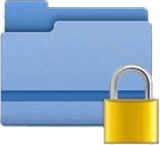Today, EncFs is one of the most popular open‑source solutions for transparent file encryption on Linux, macOS and Windows systems. This software allows you to protect sensitive data by creating an encrypted folder that mounts like a normal directory, while ensuring that the stored files remain unreadable without the encryption key.
In this review we will examine in depth the features of EncFs, the problems it solves, its installation procedure, its real‑world use cases, and finally compare it to popular alternatives.
What problems does EncFs solve?
Many companies and individual users seek to secure their sensitive files without resorting to complex proprietary solutions such as BitLocker or VeraCrypt.
The main limitations of commercial solutions are
High license costs.
Lack of transparency regarding encryption algorithms.
Inability to integrate with Linux or multi‑user systems.
EncFs addresses these issues by offering
Encryption based on FUSE (Filesystem in Userspace) as an open‑source solution.
Cross‑platform compatibility.
- Transparent access to files, with no manual decryption steps.
A modular, lightweight architecture that is easy to audit.
Thus EncFs positions itself as a simple and secure solution for protecting sensitive data on servers or workstations.
Key features and capabilities
EncFs stands out with a set of robust features while remaining easy to use for IT professionals.
Interface and ergonomics
Primarily command‑line driven, with third‑party graphical interfaces such as gEncfsM or Cryptomator.
Seamless integration into Linux environments.
Performance
Encryption occurs on‑the‑fly, without noticeable slowdown.
- Optimised for both local and network file systems.
Compatible with SSDs and NFS shares.
Customisation
- Flexible security settings (AES, Blowfish).
Choice between file‑name encryption and content‑only encryption.
Management of custom keys and possible integration with GPG or Vault.
Security
Proven AES‑256‑bit encryption.
No centralised key storage.
Compatible with Zero‑Knowledge environments.
EncFs can also be offered as an open‑source service for companies wishing to centralise file protection.
How to install and configure?
Download the latest version from the official repository:
sudo apt install encfsCreate the encrypted and clear‑text directories:
mkdir ~/chiffre ~/clairencfs ~/chiffre ~/clairConfigure security via the interactive wizard.
Access your files through the mounted folder, while the encrypted content remains in the source directory.
EncFs can also be integrated into automation scripts for encrypted backups to the cloud (e.g., Dropbox or Nextcloud) or to external drives.
Use cases for EncFs
EncFs is employed in many professional and personal contexts:
IT companies: secure storage of client data.
- System administrators: create secure directories without dedicated partitions.
Professional users: synchronise encrypted files on Nextcloud, Dropbox, or other cloud services.
- Journalists and researchers: protect confidential data on portable drives.
Example: a French cybersecurity firm uses EncFs to encrypt internal audit logs before transfer, dramatically reducing the risk of data leaks.
Comparison with alternatives
| Feature | EncFs | VeraCrypt | CryFS |
|---|---|---|---|
| Open source | ✅ Yes | ✅ Yes | ✅ Yes |
| Ease of installation | ✅ Simple | ❌ Moderate | ✅ Moderate |
| On‑the‑fly encryption | ✅ Yes | ✅ Yes | ✅ Yes |
| Cloud compatibility | ✅ Excellent | ❌ Limited | ✅ Excellent |
| Graphical interface | Optionnelle (gEncfsM) | ✅ Native | ✅ Limited |
| Performances | ✅ HIght | ❌ Moderate | ✅ Good |
| Cross‑platform | ✅ Yes | ✅ Yes | ✅ Yes |
EncFs stands out particularly for its integration simplicity and cloud compatibility, whereas VeraCrypt is more geared toward full‑volume encrypted containers.
Advantages and disadvantages
| Advantages | Disadvantages |
|---|---|
| ✅ Free and open‑source solution | ❌ No native GUI (requires third‑party tool) |
| ✅ Transparent and performant encryption | ❌ Initial complexity for non‑technical users |
| ✅ Works on Linux, macOS and Windows | ❌ Older versions had minor vulnerabilities (fixed since 2021) |
| ✅ Ideal for cloud integrations on Nextcloud or Dropbox | |
| ✅ Auditable and supported by an active open‑source community |
Summary table of characteristics
| Criteria | Description |
|---|---|
| Licence | GPLv3 |
| Encryption type | AES, Blowfish |
| Supported platforms | Linux, macOS, Windows |
| Interface | CLI, GUI tierce (gEncfsM) |
| File‑name encryption | Yes |
| Cloud integration | Yes |
| Community support | Active, with technical assistance available via the project |
Conclusion
EncFs remains a reliable and flexible reference for individual file and professional directory encryption. Thanks to its simplicity, performance, and cloud compatibility, it is an ideal solution for developers, system administrators, and professional users seeking a balance between security and practicality.
For those who prefer a heavier, all‑encompassing approach, VeraCrypt or CryFS are viable alternatives. However, for everyday use, EncFs remains the most practical and lightweight open‑source solution on the market and a highly active open‑source project for file security.


